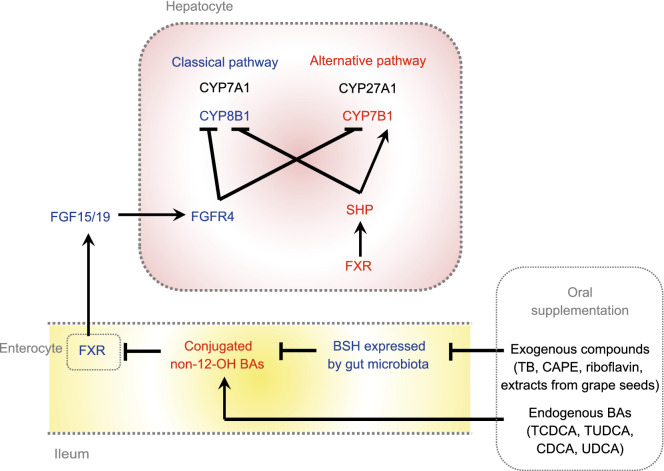Figure 1.
The mechanism of activation of alternative pathway by exogenous molecules and endogenous BAs. Oral administration of exogenous molecules suppresses the activity of intestinal BSH enzymes, and causes accumulation of predominantly conjugated non-12-OH BAs. Meanwhile, endogenous conjugated or unconjugated CDCA or UDCA could increase the abundance of non-12-OH BAs directly or indirectly (via enterohepatic circulation). These BAs inhibit intestinal FXR and therefore, downstream FGF15/19-FGFR4 signaling resulting in upregulation of the hepatic BA synthesis genes CYP7A1, CYP8B1, CYP27A1 and CYP7B1 in both classical and alternative pathways. Meanwhile, hepatic FXR expression as well as downstream SHP signaling is increased and the BA synthetic enzymes are inhibited, mainly CYP8B1, in the classical pathway. Ultimately, the combined regulation of intestinal FXR-FGF15 and hepatic FXR-SHP on hepatic BA synthesis results in increased expression of CYP7B1 in the alternative pathway. The metabolites, proteins, and pathways in blue indicate their down-regulation, whereas in red indicate up-regulation after oral treatment of exogenous and endogenous agents

